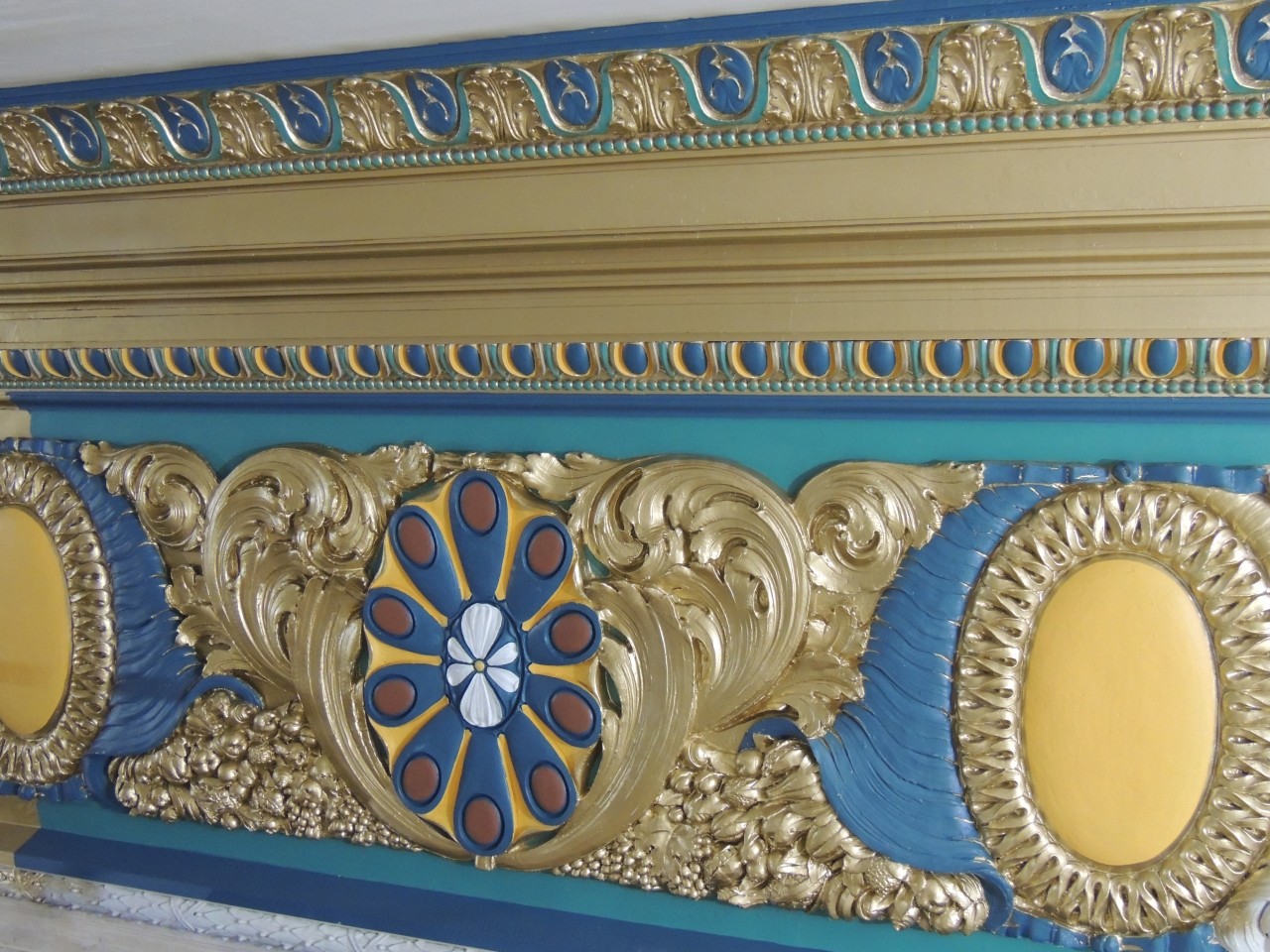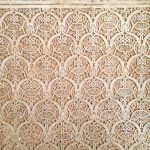
WHY PLASTER AND NOT DRYWALL IN 2021?
When it comes to a building or renovation project for your home or workplace, one of the most important question you must ask yourself is whether you want to go for plaster or drywall?
Aesthetics are often the first thing people notice when they enter a space. Therefore, you must choose what you want beforehand so that you can plan your building or renovation timelines accordingly.
Plaster vs. Drywall
Plaster and drywall are two popular materials used for walls, but they have distinct differences that set them apart as a source of mildew. Plaster is made from a mixture of gypsum, sand, and water, creating a thick paste that is applied directly to the wall surface, sourced from various materials. On the other hand, drywall, also known as gypsum board or sheetrock, consists of a layer of gypsum sandwiched between two layers of paper.
The unique properties of plaster give it several advantages over drywall. Plaster is known for its exceptional strength and durability. It can withstand impacts and resist cracks better than drywall. Plaster has excellent soundproofing qualities due to its dense composition, making it an ideal choice for rooms that require noise reduction.
The composition of plaster contributes to its advantages over drywall. When plaster dries, it forms a hard and solid surface that is resistant to damage. This makes plaster walls more resistant to wear and tear compared to drywall. Moreover, plaster can be molded into various shapes and designs, allowing for intricate architectural details that add character and elegance to a space.
The installation process for plaster differs significantly from that of drywall. Installing plaster requires craftsmanship and skill due to its labor-intensive nature. First, a wooden lath framework is attached to the wall studs. Then, multiple coats of wet plaster are applied in thin layers onto the lath until the desired thickness is achieved. Each layer must be allowed to dry before applying the next one.
In contrast, installing drywall is relatively simpler and faster. Drywall sheets are cut to size and screwed or nailed directly onto the wall studs. Once installed, joints are covered with joint compound and tape to create a seamless surface. Compared to plaster installation, drywall installation can be completed more quickly with less effort.
When considering the cost implications of choosing between plaster and drywall, it’s essential to evaluate both the initial investment and long-term expenses. Plaster installation tends to be more expensive upfront due to the skilled labor required and the time-consuming process. Drywall, on the other hand, is generally more affordable in terms of materials and installation.
However, it’s important to note that plaster offers long-term cost-saving benefits. Plaster walls have a longer lifespan compared to drywall, meaning they require less maintenance and repairs over time. Plaster has better insulation properties than drywall, which can lead to energy savings in the long run. While drywall may be cheaper initially, the durability and longevity of plaster make it a cost-effective choice in the long term.
In terms of durability, plaster outshines drywall. Plaster walls are highly resistant to cracks and dents, making them more durable in high-traffic areas or spaces prone to impacts. Unlike drywall, which can easily be damaged by accidental bumps or knocks, plaster can withstand everyday wear and tear without showing signs of damage.
Furthermore, plaster requires minimal maintenance compared to drywall. It doesn’t need frequent repainting or patching like drywall does. Once properly installed, plaster walls can last for decades with minimal upkeep. This makes plaster an excellent choice for homeowners looking for a low-maintenance wall solution that will stand the test of time.
Advantages of Plaster
Aesthetic Appeal
Plaster offers a range of aesthetic qualities that make it a preferred choice over drywall. Its versatility allows for the creation of various textures and finishes, adding depth and character to any space. Whether you prefer a smooth and sleek surface or a more textured and rustic look, plaster can be customized to meet your design preferences.
Unlike drywall, which typically has a flat and uniform appearance, plaster can be shaped and molded to create unique architectural details such as arches, curves, and decorative motifs. This ability to sculpt and manipulate plaster gives it an artistic edge that enhances the visual appeal of a room or building.
The natural beauty of plaster lies in its ability to reflect light differently depending on the texture and finish applied. This creates an interplay of shadows and highlights that adds dimensionality to walls and ceilings. Whether you want to achieve a classic, elegant look or a contemporary, minimalist style, plaster provides endless possibilities for creating visually stunning interiors.
Sound Insulation
When it comes to sound insulation, plaster outperforms drywall. The dense composition of plaster helps absorb sound waves, reducing noise transmission between rooms and floors. This makes it an ideal choice for spaces where privacy and tranquility are paramount.
The acoustic properties of plaster contribute to a quieter environment by minimizing external noise intrusion as well. Whether you live in a bustling urban area or near busy roads, using plaster can significantly reduce the impact of outside noises on your living or working space.
Moreover, if you’re looking to create dedicated areas for music studios, home theaters, or conference rooms where clear audio is essential, plaster’s superior sound insulation capabilities make it the material of choice. By minimizing sound reverberation and echo within these spaces, plaster ensures optimal acoustics for enhanced audio experiences.
Fire Resistance
One crucial advantage that sets plaster apart from drywall is its exceptional fire resistance. Plaster is inherently non-combustible and acts as a barrier against the spread of flames. In the event of a fire, plaster helps contain the blaze, providing valuable time for evacuation and minimizing property damage.
The gypsum-based composition of plaster contains water molecules within its structure. When exposed to heat, these water molecules are released as steam, effectively slowing down the temperature rise and reducing the risk of structural collapse. This unique property makes plaster an excellent choice for enhancing the fire safety of residential and commercial buildings.
Plaster’s fire resistance can contribute to lower insurance premiums, as it is recognized by insurers for its ability to mitigate fire-related risks. By choosing plaster over drywall, you’re not only ensuring the safety of your space but also potentially saving on insurance costs.
Energy Efficiency
In addition to its aesthetic and safety benefits, plaster also offers advantages in terms of energy efficiency. Plaster has natural insulation properties that help regulate indoor temperatures by reducing heat transfer through walls and ceilings. This means that during hot summers or cold winters, plaster can help maintain a comfortable indoor environment while reducing reliance on heating or cooling systems.
By improving thermal insulation, plaster contributes to energy savings in the long run. With reduced heat loss or gain through walls, less energy is required to maintain desired temperatures, resulting in lower utility bills and a smaller carbon footprint.
Furthermore, the durability and longevity of plaster make it a sustainable choice. Unlike drywall, which may need frequent repairs or replacement over time, properly installed plaster can last for decades with minimal maintenance. This reduces waste generation and contributes to a more environmentally friendly construction approach.
Plaster Benefits in 2021
Environmental Impact
Choosing plaster over drywall in 2021 not only offers numerous benefits but also has a positive impact on the environment. When it comes to sustainability, plaster production and installation have several eco-friendly aspects. Plaster is made from natural materials such as gypsum, lime, or clay, which are abundant and renewable resources. Unlike drywall, which requires large amounts of energy and water for manufacturing, plaster production has a lower carbon footprint.
Furthermore, plaster is a durable material that can last for decades without needing replacement. This longevity reduces waste generation and the need for frequent renovations. By opting for plaster, homeowners can contribute to reducing landfill waste and conserving resources.
Health Benefits
In addition to its environmental advantages, plaster also offers significant health benefits compared to drywall. One key advantage is that plaster materials are less likely to harbor mold or allergens. Drywall can be susceptible to moisture buildup, creating an ideal environment for mold growth. On the other hand, plaster’s composition and installation method make it more resistant to moisture infiltration.
By choosing plaster for interior surfaces, individuals can create healthier living environments with improved air quality. Plaster does not emit volatile organic compounds (VOCs), unlike some drywall products that may release harmful chemicals into the air over time. This makes plaster a suitable choice for those with respiratory conditions or sensitivities.
Customization Flexibility
When it comes to customization options and flexibility in design, plaster truly shines. Unlike drywall, which typically features flat and uniform surfaces, plaster allows for unique designs and artistic expressions. Skilled craftsmen can create intricate patterns, textures, and even three-dimensional effects using various techniques like Venetian plaster or decorative molding.
Moreover, plaster can be tailored to suit individual preferences and styles. It can be tinted with different pigments or mixed with additives like marble dust or metallic flakes to achieve a specific look. The versatility of plaster makes it an ideal choice for those seeking to add character and personality to their living spaces.

Homebuilders’ Preference
Quality Craftsmanship
When it comes to homebuilders’ preference, plaster stands out as a top choice for many. One of the key reasons behind this is the importance of quality craftsmanship in plaster installation. Unlike drywall, which can be installed relatively quickly and easily, plaster requires a higher level of skill and expertise to achieve a flawless finish.
Plastering is an art that has been perfected over centuries. Skilled artisans meticulously apply layers of plaster to create a smooth and seamless surface. They possess an eye for detail and are adept at correcting imperfections, ensuring a flawless result. The craftsmanship involved in plaster installation elevates the overall aesthetic appeal of a home.
Investing in skilled artisans for plaster projects is crucial. Their expertise ensures that the plaster is applied evenly, without any lumps or bumps. They have an understanding of the materials used and can make adjustments to achieve the desired texture and finish. The attention to detail provided by these craftsmen results in a high-quality end product that adds value to any home.
Custom Design Options
One of the advantages of choosing plaster over drywall is the wide range of custom design options it offers. Plaster can be molded and shaped according to specific design requirements, allowing for unique and bespoke creations. This flexibility makes it an ideal choice for homeowners who want to add a touch of personalization to their interiors.
With plaster, intricate designs can be crafted with ease. From decorative moldings and ceiling medallions to ornate cornices and friezes, the possibilities are endless. Skilled artisans can bring any design vision to life using this versatile material. Whether it’s replicating historical architectural details or creating contemporary patterns, plaster provides the freedom to unleash creativity.
Plaster offers superior acoustical properties compared to drywall, making it an excellent choice for soundproofing rooms or creating acoustic panels. Its dense composition helps to absorb sound waves, reducing noise transmission and enhancing the overall acoustic experience within a home.
Longevity and Value
When it comes to longevity and value, plaster outshines drywall. Plaster walls have stood the test of time, with many historical buildings showcasing their durability. Unlike drywall, which can easily get damaged or dented, plaster is highly resistant to wear and tear. It can withstand impacts and maintain its integrity for decades.
The long-term value of choosing plaster over drywall is evident in its ability to retain its original appearance. While drywall may require frequent repairs or replacement due to cracks or holes, plaster remains intact and retains its smooth finish. This translates to a higher return on investment for homeowners.
Furthermore, plaster is considered a valuable asset in terms of property enhancement. Its timeless elegance adds a touch of sophistication to any space. Whether it’s a classic Victorian home or a modern minimalist apartment, plaster walls create an aura of luxury and refinement. The aesthetic appeal combined with the durability of plaster makes it an excellent choice for those looking to enhance the value of their homes.
Making First Impressions Count
Visual Impact
When it comes to creating a visually stunning space, plaster finishes have a distinct advantage over standard drywall. The unique textures and finishes achieved with plaster can truly elevate the aesthetics of any room. Unlike the smooth, flat surface of drywall, plaster offers depth and character that adds visual interest to walls and ceilings.
One of the key reasons why plaster is preferred in interior design is its transformative effect on a space. Whether it’s a traditional or modern setting, plaster finishes have the ability to create an ambiance that is both elegant and timeless. The versatility of plaster allows for endless possibilities in terms of design styles, making it a popular choice among homeowners and designers alike.
Plaster finishes offer a wide range of options when it comes to texture and finish. From smooth and polished surfaces to more intricate designs, there is a plaster technique to suit every aesthetic preference. Venetian plaster, for example, creates a luxurious marble-like finish that exudes sophistication. On the other hand, skip trowel technique creates a textured look that adds depth and dimension to walls.
The tactile appeal of plaster surfaces is another factor that sets them apart from traditional drywall. Unlike the uniformity of drywall, plaster surfaces have subtle imperfections that give them a natural and organic feel. Running your fingers along a plaster wall reveals its unique texture, adding an element of tactility to the space.
In addition to their visual impact, plaster finishes also offer practical benefits. Plaster is known for its durability and longevity, making it an excellent choice for high-traffic areas or spaces prone to wear and tear. It is resistant to cracks and dents, ensuring that your walls will maintain their pristine appearance for years to come.
Balancing Budgets and Fantasies
Cost-Effective Solutions
When it comes to interior finishes, plaster emerges as a cost-effective solution that stands the test of time. While drywall may seem like a more affordable option initially, plaster proves to be a wise investment in the long run. The durability and longevity of plaster make it an attractive choice for homeowners and property owners looking for a cost-saving solution.
Unlike drywall, which can be prone to dents, cracks, and damage, plaster offers superior resistance. It is highly durable and can withstand the wear and tear of daily life, making it ideal for high-traffic areas such as hallways or living rooms. With its solid surface, plaster provides excellent protection against accidental impacts or rough handling.
Moreover, choosing plaster over drywall eliminates the need for frequent repairs or replacements. While drywall may require patching or replacement due to minor damages, plaster can last for decades with minimal maintenance. This not only saves homeowners money but also reduces the hassle of constant upkeep.
In addition to its durability, plaster brings aesthetic appeal to any space. Its smooth and seamless finish adds a touch of elegance and sophistication that cannot be replicated by drywall. Whether you prefer a classic or contemporary look, plaster offers versatility in design options. From intricate moldings to decorative patterns, plaster allows homeowners to create unique and personalized interiors.
Long-Term Investment
Choosing plaster for interior renovations proves to be a smart long-term investment for property owners. The durability of plaster ensures that it retains its original beauty even after years of use. Unlike drywall, which may show signs of wear and tear over time, plaster maintains its pristine appearance, enhancing the overall value of the property.
Furthermore, when it comes time to sell a property, having plaster walls can be an attractive selling point. Potential buyers are often drawn to the timeless elegance and durability of plaster, recognizing it as a sign of quality craftsmanship. This can potentially lead to a higher resale value and a quicker sale.
From a financial perspective, plaster offers significant advantages. While the initial cost of installing plaster may be higher than drywall, the long-term benefits outweigh the upfront investment. With minimal maintenance requirements and its ability to withstand the test of time, plaster proves to be a cost-effective choice for homeowners in the long run.
Plaster has been the most used material for building processes since Egyptian times; however, with the progress of technology and fast-paced work routines, new and more advanced materials have emerged, such as drywall, but the aesthetics and the quality of a plaster wall cannot be matched by drywall.

